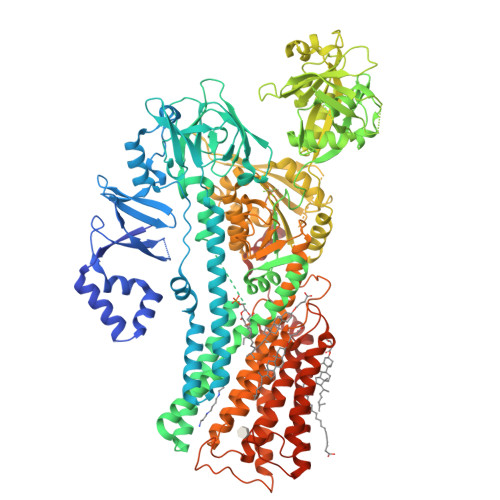Structural basis of polyamine transport by human ATP13A2 (PARK9).
Sim, S.I., von Bulow, S., Hummer, G., Park, E.(2021) Mol Cell 81: 4635-4649.e8
- PubMed: 34715013
- DOI: https://doi.org/10.1016/j.molcel.2021.08.017
- Primary Citation of Related Structures:
7N70, 7N72, 7N73, 7N74, 7N75, 7N76, 7N77, 7N78 - PubMed Abstract:
Polyamines are small, organic polycations that are ubiquitous and essential to all forms of life. Currently, how polyamines are transported across membranes is not understood. Recent studies have suggested that ATP13A2 and its close homologs, collectively known as P5B-ATPases, are polyamine transporters at endo-/lysosomes. Loss-of-function mutations of ATP13A2 in humans cause hereditary early-onset Parkinson's disease. To understand the polyamine transport mechanism of ATP13A2, we determined high-resolution cryoelectron microscopy (cryo-EM) structures of human ATP13A2 in five distinct conformational intermediates, which together, represent a near-complete transport cycle of ATP13A2. The structural basis of the polyamine specificity was revealed by an endogenous polyamine molecule bound to a narrow, elongated cavity within the transmembrane domain. The structures show an atypical transport path for a water-soluble substrate, in which polyamines may exit within the cytosolic leaflet of the membrane. Our study provides important mechanistic insights into polyamine transport and a framework to understand the functions and mechanisms of P5B-ATPases.
Organizational Affiliation:
Department of Molecular and Cell Biology, University of California Berkeley, Berkeley, CA 94720, USA.






















